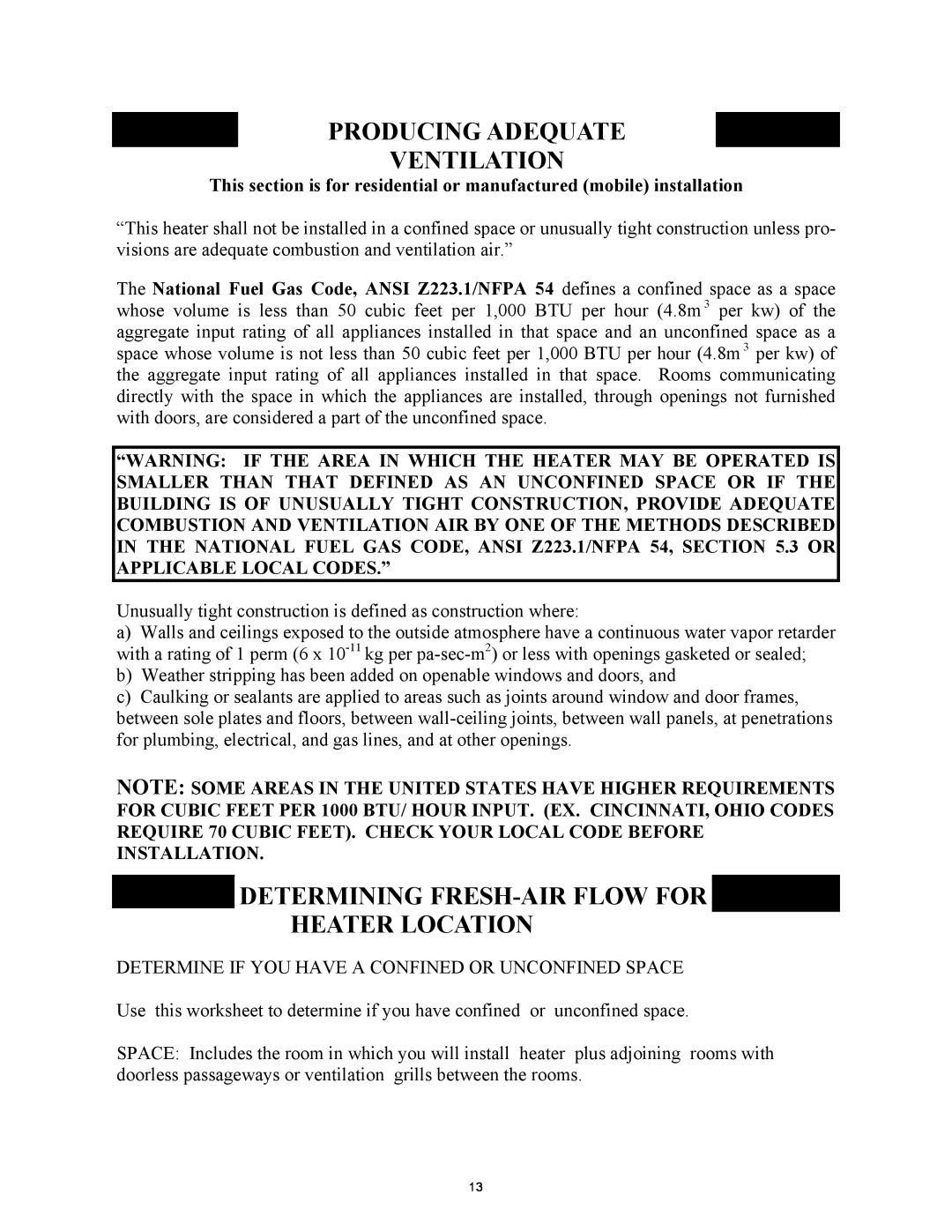
PRODUCING ADEQUATE
VENTILATION
This section is for residential or manufactured (mobile) installation
“This heater shall not be installed in a confined space or unusually tight construction unless pro- visions are adequate combustion and ventilation air.”
The National Fuel Gas Code, ANSI Z223.1/NFPA 54 defines a confined space as a space whose volume is less than 50 cubic feet per 1,000 BTU per hour (4.8m 3 per kw) of the aggregate input rating of all appliances installed in that space and an unconfined space as a space whose volume is not less than 50 cubic feet per 1,000 BTU per hour (4.8m 3 per kw) of the aggregate input rating of all appliances installed in that space. Rooms communicating directly with the space in which the appliances are installed, through openings not furnished with doors, are considered a part of the unconfined space.
Unusually tight construction is defined as construction where:
a)Walls and ceilings exposed to the outside atmosphere have a continuous water vapor retarder with a rating of 1 perm (6 x
b)Weather stripping has been added on openable windows and doors, and
c)Caulking or sealants are applied to areas such as joints around window and door frames, between sole plates and floors, between
NOTE: SOME AREAS IN THE UNITED STATES HAVE HIGHER REQUIREMENTS FOR CUBIC FEET PER 1000 BTU/ HOUR INPUT. (EX. CINCINNATI, OHIO CODES REQUIRE 70 CUBIC FEET). CHECK YOUR LOCAL CODE BEFORE INSTALLATION.
 DETERMINING
DETERMINING FRESH-AIR FLOW FOR  HEATER LOCATION
HEATER LOCATION
DETERMINE IF YOU HAVE A CONFINED OR UNCONFINED SPACE
Use this worksheet to determine if you have confined or unconfined space.
SPACE: Includes the room in which you will install heater plus adjoining rooms with doorless passageways or ventilation grills between the rooms.
13
